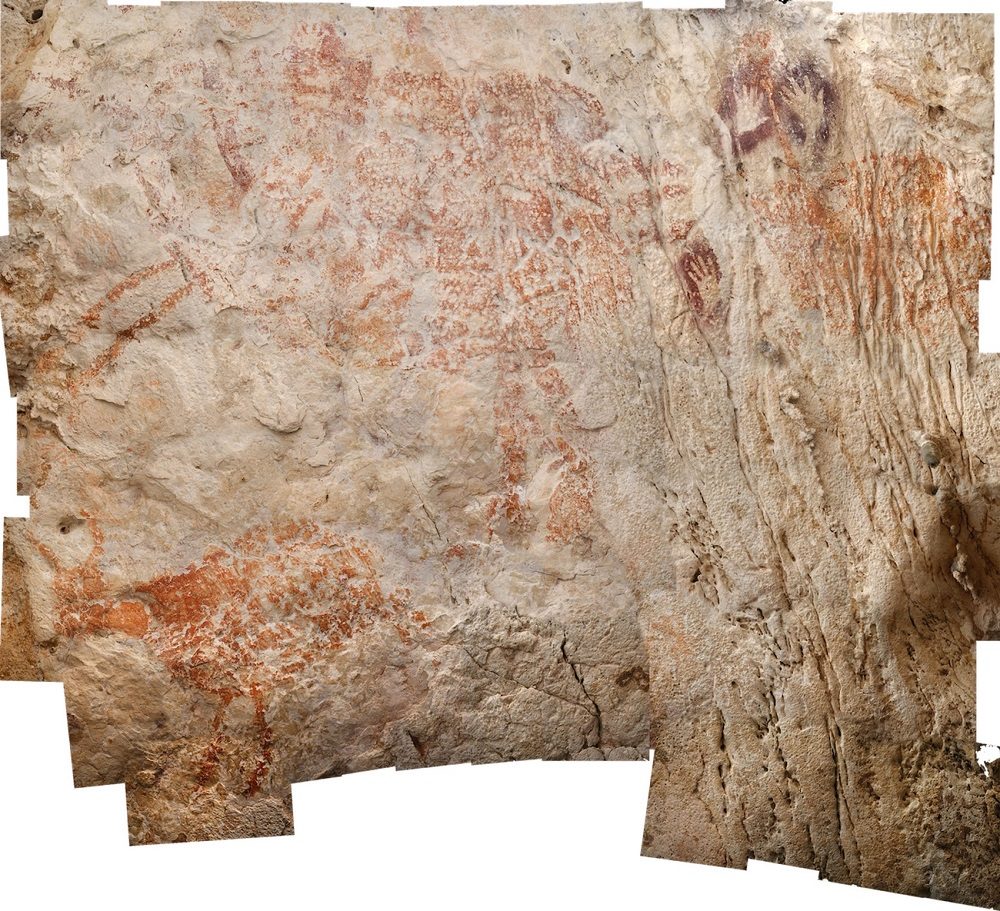
In a paper published in the journal Nature, Maxime Aubert from Australia's Griffith University, reveals the red-orange painting - faint now, and depicting an animal that is not readily identifiable - as one of many put onto the walls of the caves in an area known as Lubang Jeriji Saléh, on island's Sangkulirang-Mangkalihat Peninsula.
After conducting uranium-series analysis of calcium carbonate deposits that have accreted on top of the painting, the scientists concluded that the minimum age for it was 40,000 years.
This is, write the researchers, "currently the oldest date for figurative artwork from anywhere in the world". As well as many other depictions of animals, the caves also contain scores of "hand stencils" - art created by placing a hand on the wall and then covering it with pigment, resulting in a negative rendition.
Aubert and colleagues dated two such stencils to 37,000 years ago, and a third to potentially as early as 52,000 years ago.
Using dating and visual evidence, the researchers identified three distinct phases in the art styles of the caves, assumed to reflect deep cultural changes over many thousands of years.
Following the red-orange figurative paintings and hand stencils, there followed several thousand years in which the preferred pigment was mulberry-coloured and used to depict intricate motifs (as well as more hand stencils). This period ended somewhere around 20,000 years ago, and was replaced by dark purple depictions of humans.
The antiquity of the early artwork not only shifts the record for the earliest figurative art away from the western towards the east, it also raises a number of fascinating questions.
"It is now evident that rock art emerges in Borneo at around the same time as the earliest forms of artistic expression appear in Europe in association with the arrival of modern humans," write the researchers.
"Thus, similar cave art traditions appear to arise near-contemporaneously in the extreme west and extreme east of Eurasia. Whether this is a coincidence, the result of cultural convergence in widely separated regions, large-scale migrations of a distinct Eurasian population or another cause remains unknown."



Reader Comments
to our Newsletter